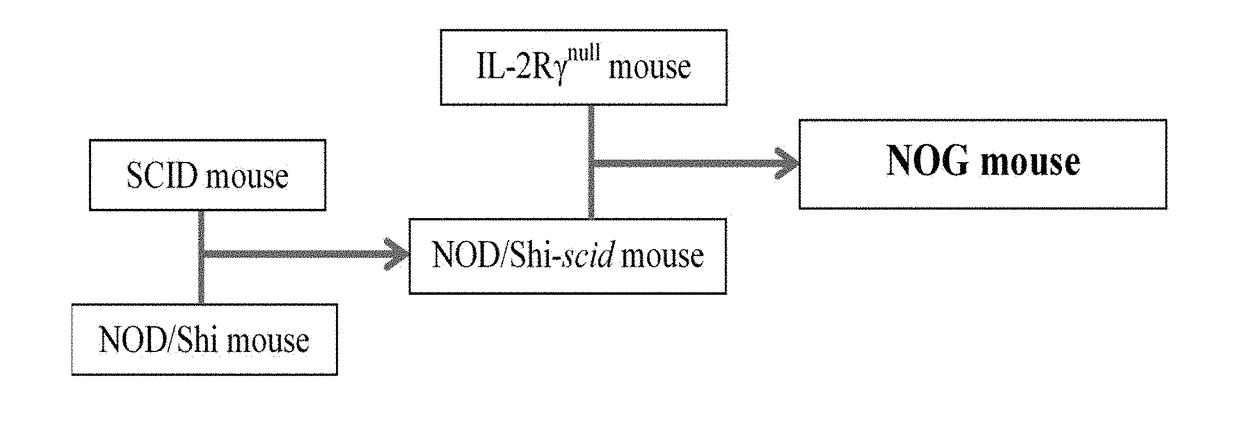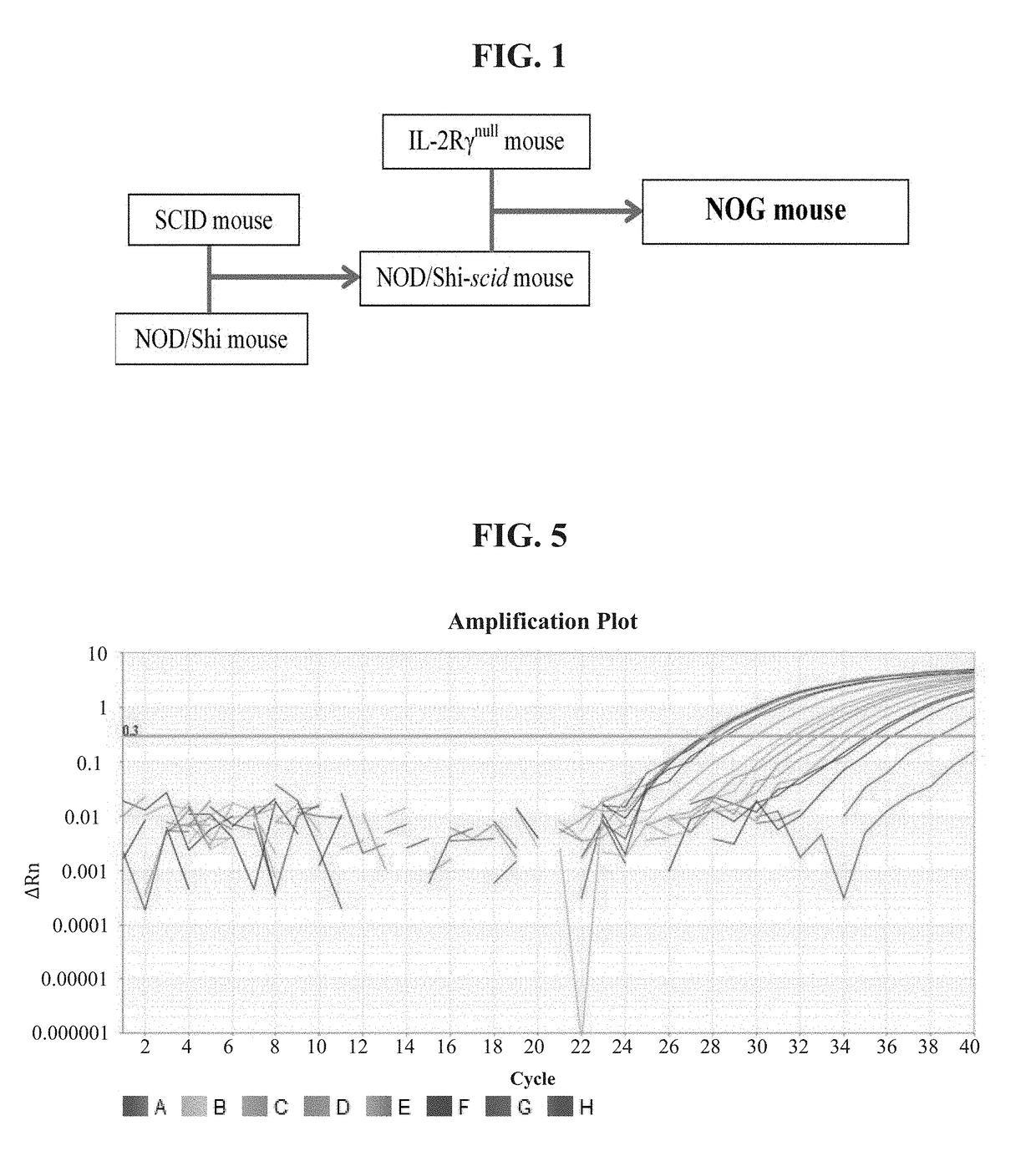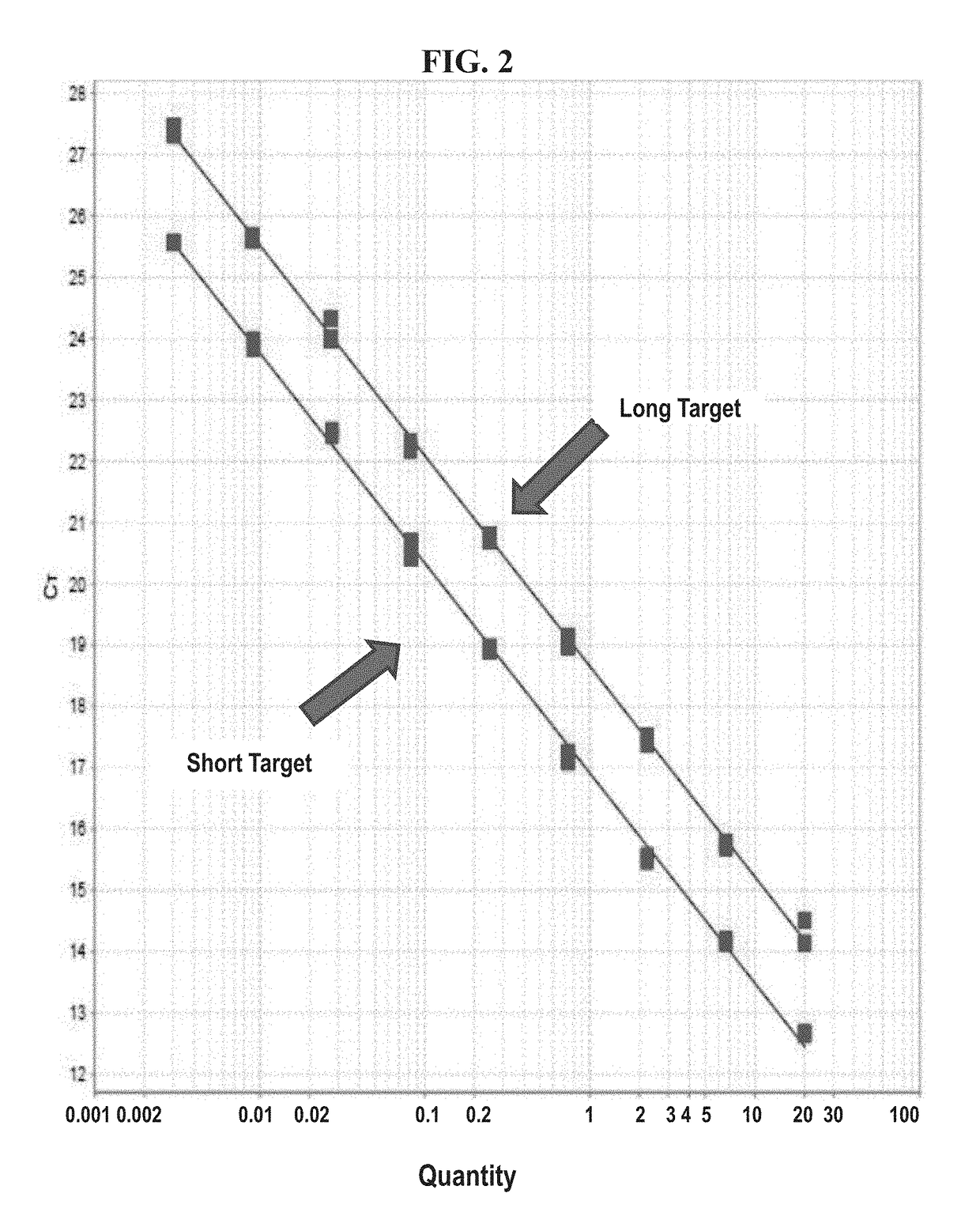Method for measuring tumor burden in patient derived xenograft (PDX) mice
a patient-derived xenograft and tumor burden technology, applied in the field of high-sensitivity method for measuring tumor burden in patient-derived xenograft mice, can solve the problem that success was often not reflected in successful treatment of human cancer, and achieve the effect of facilitating observation of the growth of human tumors
- Summary
- Abstract
- Description
- Claims
- Application Information
AI Technical Summary
Benefits of technology
Problems solved by technology
Method used
Image
Examples
example 1
nd Probes
[0284]Primers and probes that are useful in the described embodiments relating to a method for measuring tumor burden in PDX mice are shown in Table 3. An index of all primers and probes studied in relation to the present invention is shown in Table 4. An intra retrotransposable element (RE) primer design was used to target a Yb8 Alu sequence of 79 bp in size for the “short” fragment as well as a sequence in the SINE-R region of SVA of 290 bp in size for the “long” target in human DNA. An internal positive control (IPC) to assess the presence or absence of inhibitors in the sample was studied as well. IPC target synthetic sequences of 92 bp, 158 bp, 172 bp, and 192 bp were studied. Inhibition studies using inhibitors commonly found in forensic samples were performed on the 92 bp, 158 bp, and 172 bp IPC target sequences.
[0285]Two systems were developed: one three target system containing the Yb8 “short” Alu fragment labeled in FAM, the SVA “long” fragment labeled in Cy5, and...
example 2
merization and Cross Reactivity
[0290]To verify the accuracy of the quantity obtained from each target and to rule out any cross reactivity between primers, a melt curve analysis and amplification artifacts from reactions containing the short target forward primer and the long target reverse primer, both human DNA sequences, were examined by fragment analysis. Melt curves exhibit the presence of a single peak for each of the Yb8 and SVA reactions, as expected. A slightly broad base was observed for both targets, indicating the presence of primer dimers. FIGS. 6A and 6B show melt curve analyses for the Yb8 and SVA targets respectively.
[0291]Fragment analysis confirmed the presence of the targeted fragment for each human DNA target sequence as well as the absence of any artifacts resulting from cross reactivity between the primers for the short and long human DNA target sequences (see Table 5). Some primer dimers were observed and one artifact at −67 bp was also observed. Overall, the ...
example 3
lood Samples of Mice Engrafted with Tumor Cells to Determine Successful Humanization of Mice
[0295]Table 6 shows quantitative DNA testing results for both human and mouse DNA in a variety of PDX mice.
[0296]Two mouse samples (#M6 and #M7) were engrafted with tumor cells and allowed to incubate with the tumor cells for different amounts of time before blood was drawn from each of the specimens. Engraftment for mouse #M7 had previously been confirmed. Mouse #M6-Wk 4 was newly reconstituted with CD34+ cells, and engraftment had not been confirmed for this mouse. DNA controls for both mouse and human and a no-template control were also tested. All samples (mouse and controls) were tested by carrying out qPCR runs using the mouse primer assay and the InnoQuant® Kit. Table 7 shows the DNA quantification results for the mouse and human DNA for the mouse model specimens at various intervals following tumor engraftment and control samples. For both mouse models tested, various amounts of human...
PUM
| Property | Measurement | Unit |
|---|---|---|
| Volume | aaaaa | aaaaa |
| Volume | aaaaa | aaaaa |
| Volume | aaaaa | aaaaa |
Abstract
Description
Claims
Application Information
 Login to View More
Login to View More - R&D
- Intellectual Property
- Life Sciences
- Materials
- Tech Scout
- Unparalleled Data Quality
- Higher Quality Content
- 60% Fewer Hallucinations
Browse by: Latest US Patents, China's latest patents, Technical Efficacy Thesaurus, Application Domain, Technology Topic, Popular Technical Reports.
© 2025 PatSnap. All rights reserved.Legal|Privacy policy|Modern Slavery Act Transparency Statement|Sitemap|About US| Contact US: help@patsnap.com



